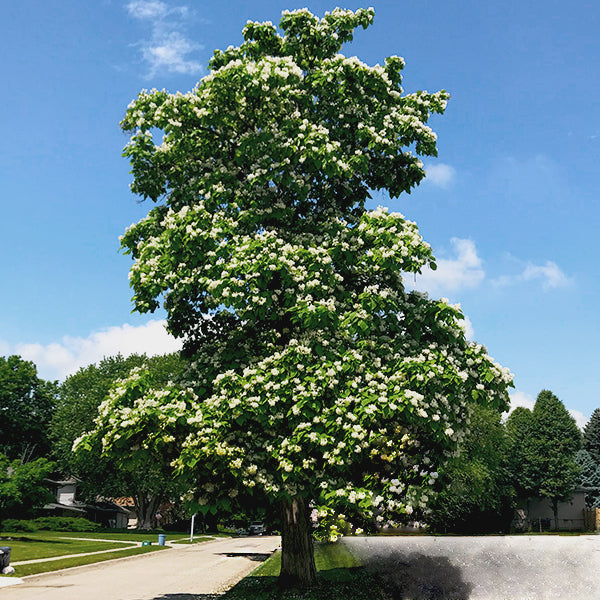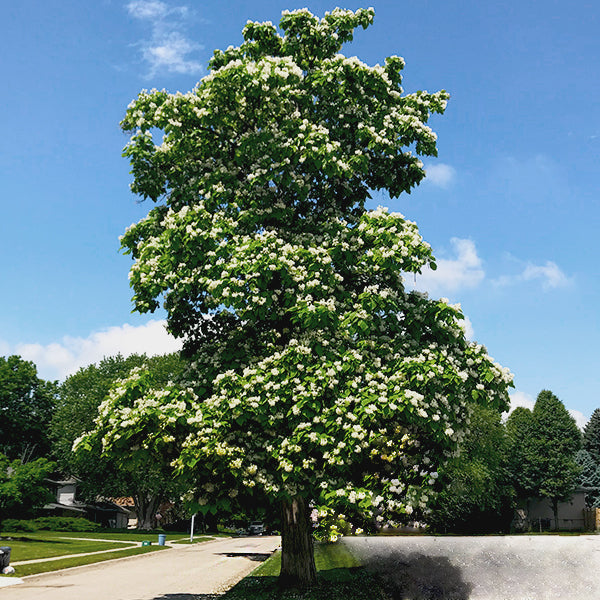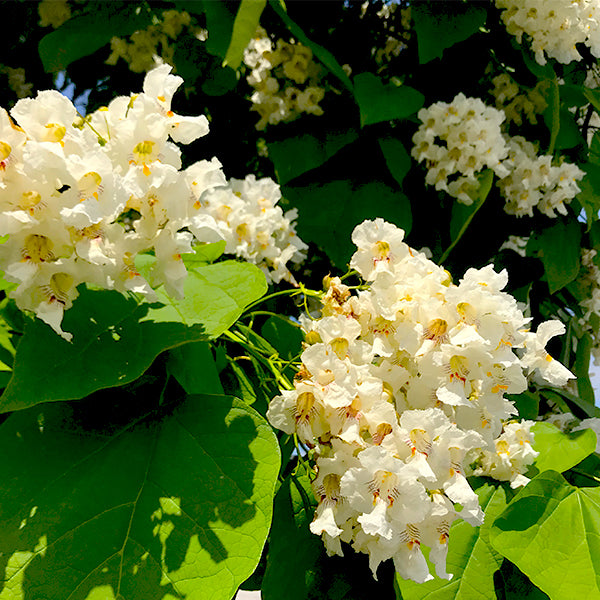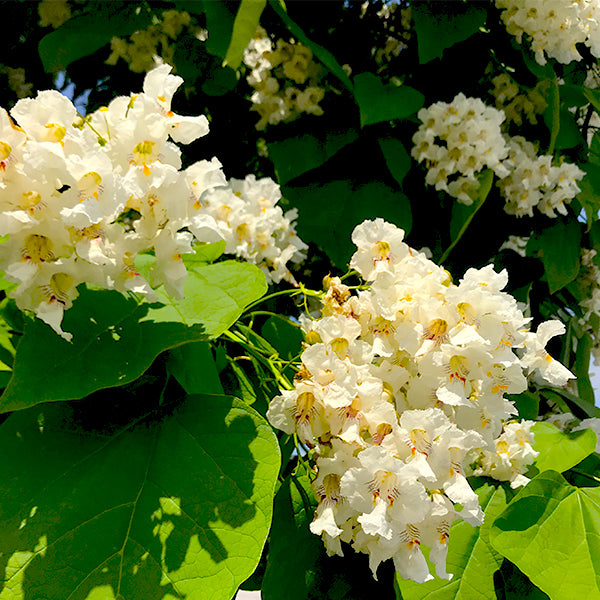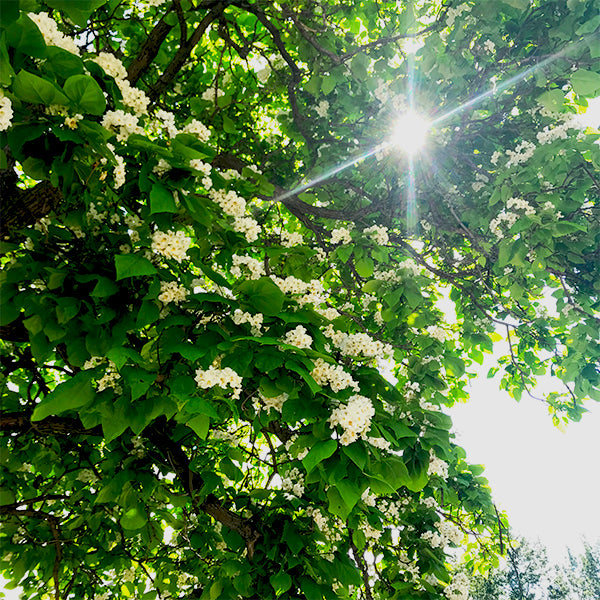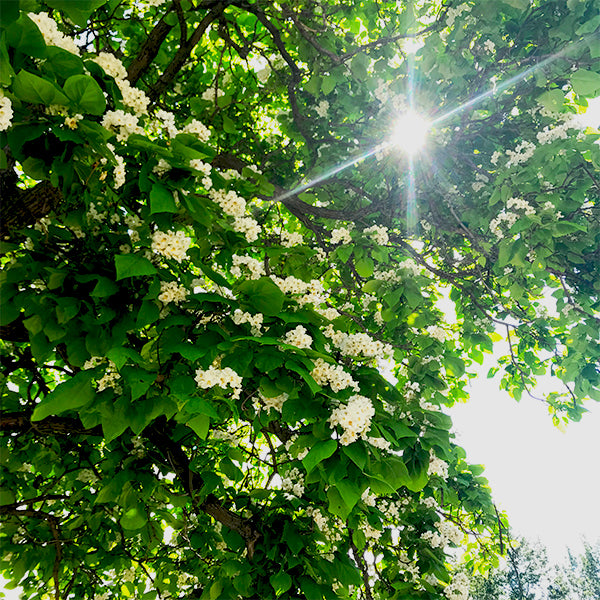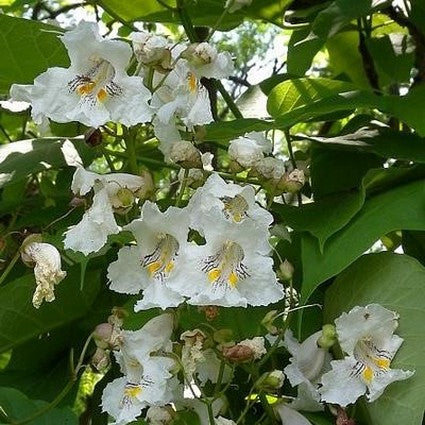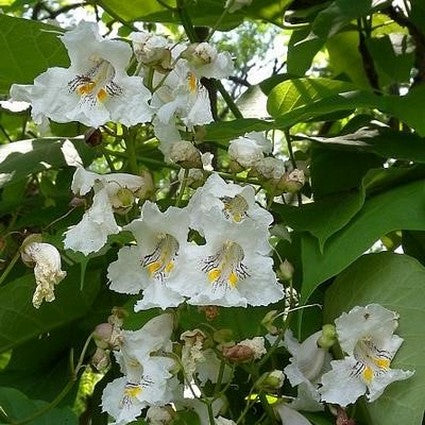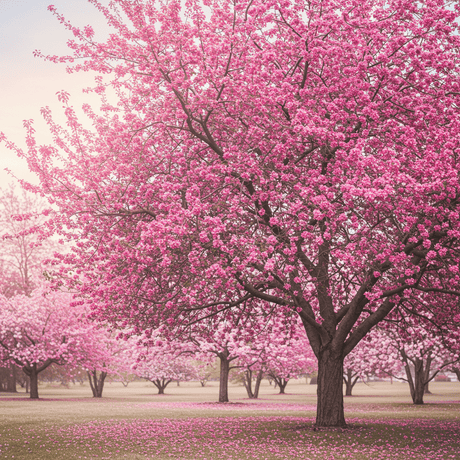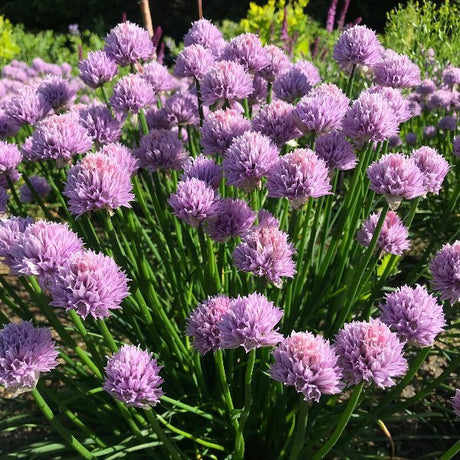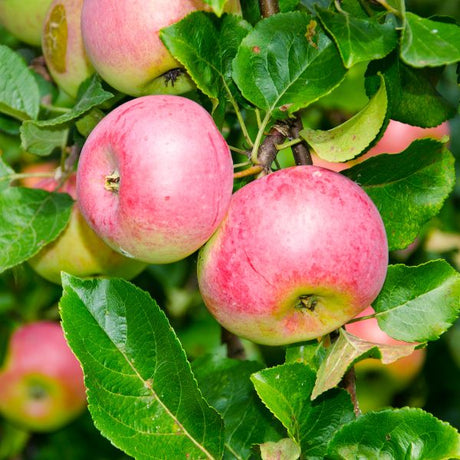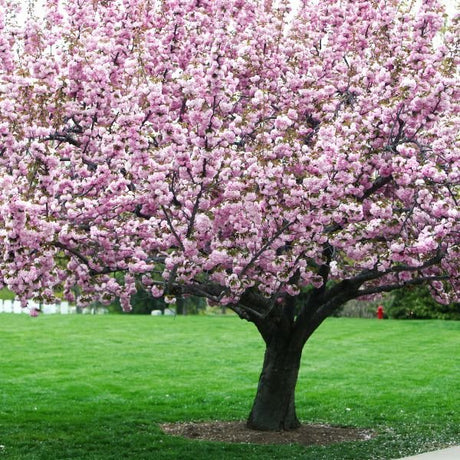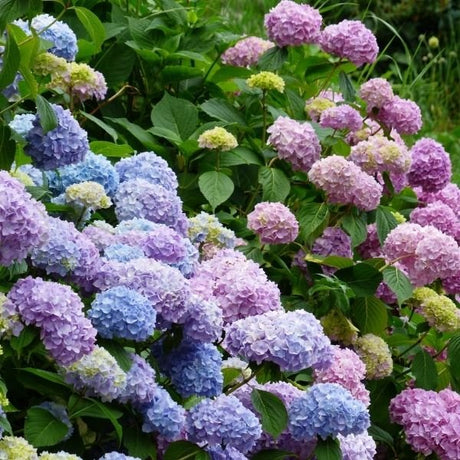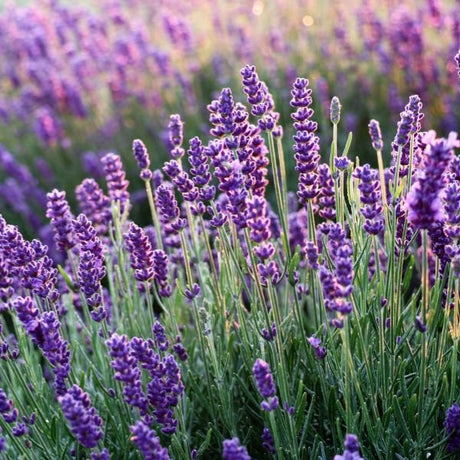Northern Catalpa Tree
Catalpa speciosa
- Stay Protected with Plant Sentry ™
Northern Catalpa Tree - #3 Container is backordered and will ship as soon as it is back in stock.
Plant Sentry™
Plant Sentry™

Plant Sentry™ Protected
Your order is protected by our compliance system that:
- Prevents restricted plants from shipping to your state
- Ensures plants meet your state's agricultural requirements
- Protects gardens from invasive pests and diseases
Delivery and Shipping
Delivery and Shipping
Delivery and Shipping
Fast, Safe Plant Delivery
Ships in 3-4 business days • Tracking provided • Weather protected
| Under $50 | $9.99 |
| $50 - $99.99 | $14.99 |
| $100 - $149.99 | $16.99 |
| $150+ | $24.99 |
✓ Zone-specific timing • ✓ Professional packaging • ✓ Health guarantee
Understanding Plant Options
Nature Hills offers plants in two main formats:
- Container Plants: Grown in pots with soil, sized by container volume and plant age
- Bare Root Plants: Dormant plants without soil, sized by height measurements
Container Plant Sizes
Container sizes indicate plant age and growing capacity rather than liquid volume equivalents. Our containers follow industry-standard nursery "trade gallon" specifications, which differ from standard liquid gallon measurements.
Young Plants (6 months to 18 months old)
| Container Size | Actual Volume | Metric Equivalent |
|---|---|---|
| 2" x 2" x 3" | 0.18 - 0.21 dry quarts | 0.20 - 0.23 dry liters |
| 4" Container | 0.31 - 0.87 dry quarts | 0.35 - 0.96 dry liters |
| 4.5" Container | 0.65 dry quarts | 0.72 dry liters |
| 6" Container | 1.4 dry quarts | 1.59 dry liters |
| 1 Quart | 1 dry quart | 1.1 dry liters |
| 5.5" Container | 1.89 dry quarts | 2.08 dry liters |
Established Plants (18 months to 2.5 years old)
| Container Size | Actual Volume | Metric Equivalent |
|---|---|---|
| 2 Quart | 2 dry quarts | 2.2 dry liters |
| #1 Container | 2.26 - 3.73 dry quarts | 2.49 - 4.11 dry liters |
| 5" x 5" x 12" | 3.5 - 4.3 dry quarts | 3.85 - 4.74 dry liters |
Mature Plants (2-4 years old)
| Container Size | Actual Volume | Metric Equivalent |
|---|---|---|
| #2 Container | 1.19 - 1.76 dry gallons | 5.24 - 7.75 dry liters |
| #3 Container | 2.15 - 2.76 dry gallons | 8.14 - 12.16 dry liters |
Large Plants (3-5 years old)
| Container Size | Actual Volume | Metric Equivalent |
|---|---|---|
| #5 Container | 2.92 - 4.62 dry gallons | 12.86 - 20.35 dry liters |
| #6 Container | 5.25 - 6.01 dry gallons | 23.12 - 26.42 dry liters |
| #7 Container | 5.98 - 6.53 dry gallons | 26.34 - 28.76 dry liters |
Bare Root Plants
Bare root plants are sold by height from the root system to the top of the plant. Plants may exceed minimum height requirements.
Common Sizes:
- Trees: 1 foot, 2 feet, 3 feet, 4 feet, 5 feet, 6 feet
- Shrubs & Perennials: 1 foot, 18 inches, 2 feet
Important Notes
Container Volume Specifications
- Trade Gallon Standard: Our containers follow industry-standard "trade gallon" specifications established by the American National Standards Institute (ANSI Z60.1) for nursery stock
- Volume Variations: Actual soil volume may vary due to plant root systems and growing medium settlement
- Age Indicators: Container size primarily indicates plant age and maturity rather than liquid volume equivalents
Growing Conditions
- Plant size can vary based on variety and growing conditions
- Container size helps indicate plant maturity and establishment level
- Larger containers generally mean more established root systems and faster landscape establishment
Seasonal Availability
- Bare root plants are available seasonally when dormant
- Container plants are available throughout the growing season
- Specific varieties may have limited availability in certain sizes
Questions?
For questions about specific plant sizes or availability, please contact our plant experts who can help you choose the right size for your landscape needs.
Plant Highlights
Northern Catalpa Tree highlights at a glance!
-
Brand
-
Plant Class
-
Botanical Name
-
Characteristics
-
Suitable Space
-
Growing Zones4, 5, 6, 7, 8
-
Mature Height
-
Mature Spread
-
Sun ExposureFull Sun
-
Moisture
-
Soil
-
Growth RateFast
-
Flower Color
-
Fall Color
-
Pollinator FriendlyYes
-
Pollinator Required
-
Pruning Time
-
Bloom PeriodLate Spring
-
NativeYes
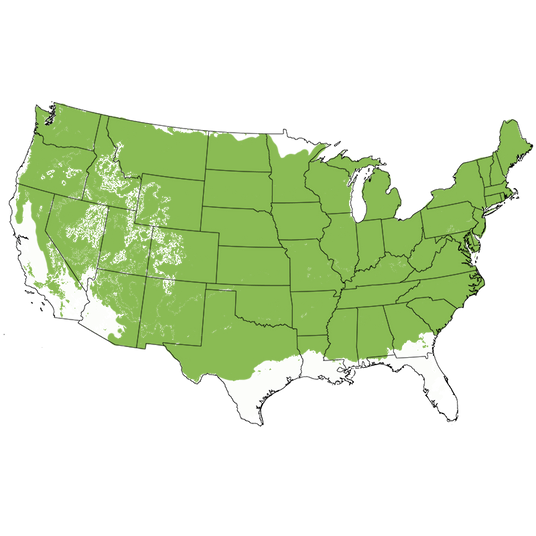
Growing Zones 4-8
Elegant, Fast-Growing Native Shade Tree With Giant Blooms
Few trees leave such a lasting impression as the Northern Catalpa (Catalpa speciosa). This fast-growing native shade tree explodes with enormous clusters of white, bell-shaped flowers in late spring that resemble Azalea blooms, each freckled with golden throats and crimson speckles. These fragrant blooms attract hummingbirds and pollinators by the dozens!
With its heart-shaped leaves stretching up to 12 inches wide, this ornamental tree delivers quick, cooling shade and a lush tropical vibe. The large canopy sways gracefully in the summer breeze, while the long, bean-like seed pods add fun winter interest.
Native to the Midwest and a proud member of the Bignonia family, this tree is related to Trumpet Vine and Royal Paulownia, each known for showy flowers and fast growth. Also called the Cigar Tree, Indian Bean Tree, Hardy Catalpa, or Western Catalpa, this American classic has been treasured for generations for both beauty and utility.
>>Jump to Planting & Care Instructions
Key Features
- Fast-growing native shade tree with huge heart-shaped leaves
- Massive clusters of white, fragrant flowers in spring
- Long, dangling bean-like seed pods for winter interest
- Tolerates wet soils and urban conditions
- Hardy, adaptable, and low maintenance
- Attracts hummingbirds and pollinators
- Excellent wood quality with natural rot resistance
Landscaping Uses
The Northern Catalpa's size and personality make it an unforgettable focal point wherever planted. Growing 40–60 feet tall with an equally wide spread, this majestic street tree thrives in parks, large landscapes, and naturalized prairie settings.
Use it as a centerpiece in an open lawn, near a pond for mirrored reflections, or in a wildlife garden where pollinators and birds can enjoy its blooms and seed pods. Catalpa also fits beautifully in large rain gardens or shelterbelt plantings, thanks to its tolerance for moist soils and wind exposure.
Landscaping Ideas:
- Focal point shade tree in large yards or meadows
- Street tree for urban and suburban use
- Accent near ponds or streams
- Windbreak or shelterbelt tree in rural settings
- Great for naturalized prairie and rain garden designs
Care & Maintenance
USDA Growing Zones: 4–8
This deciduous native tree is adaptable and tough as nails! It's fast-growing and tolerates a wide range of conditions, including wet soil, urban pollution, and heat.
- Plant Type: Deciduous, fast-growing native shade tree
- Planting Time: Spring or fall
- Sun Requirements: Full sun for best flowering; tolerates partial shade
- Soil Requirements: Adaptable to clay, loam, or sandy soil; tolerates wet soils but thrives in well-drained conditions
- Moisture Needs: Moderate; water regularly until established, then use the Finger Test to monitor. Young trees need consistent moisture in their first year.
- Mulch: Apply a 3–4 inch deep layer of organic bark chips; learn how and why to mulch your plants.
- Fertilization Needs: Feed with compost or a balanced tree fertilizer in spring.
- Pruning Info: Prune in summer to remove crossing or multiple leaders; shape early for strong structure. For general tips, check our Pruning 101 guide.
- Special Perks: Resistant to many pests and tolerant of pollution and compacted soil. Excellent wood used historically for fence posts and furniture.
Don't forget to order your Nature Hills Root Booster for lifelong mycorrhizal root support.
A Tree With Character and Charm!
The Northern Catalpa delivers in every way, a native that grows fast, provides huge, heart-shaped shade, and explodes with flowers each spring. Between its exotic blooms, whimsical seed pods, and wildlife value, it's a tree with real personality and nostalgia.
Order your Northern Catalpa today from Nature Hills Nursery and enjoy its fast-growing shade and spectacular blooms for decades to come!
FAQs
What is another name for Northern Catalpa?
It's also known as the Cigar Tree, Indian Bean Tree, Hardy Catalpa, or Western Catalpa.
How fast does Northern Catalpa grow?
It's considered a fast-growing tree, adding up to 2 feet of growth per year under good conditions.
Does Northern Catalpa tolerate wet soil?
Yes, this native thrives along rivers and streams and handles occasional flooding beautifully.
Is Northern Catalpa messy?
It drops large leaves and pods, so best suited for open lawns or naturalized areas where cleanup is easy.
What are Catalpa worms?
Catalpa Sphinx Moth caterpillars, also called "catawba worms," feed on the leaves and are prized as fishing bait for catfish and bass.

